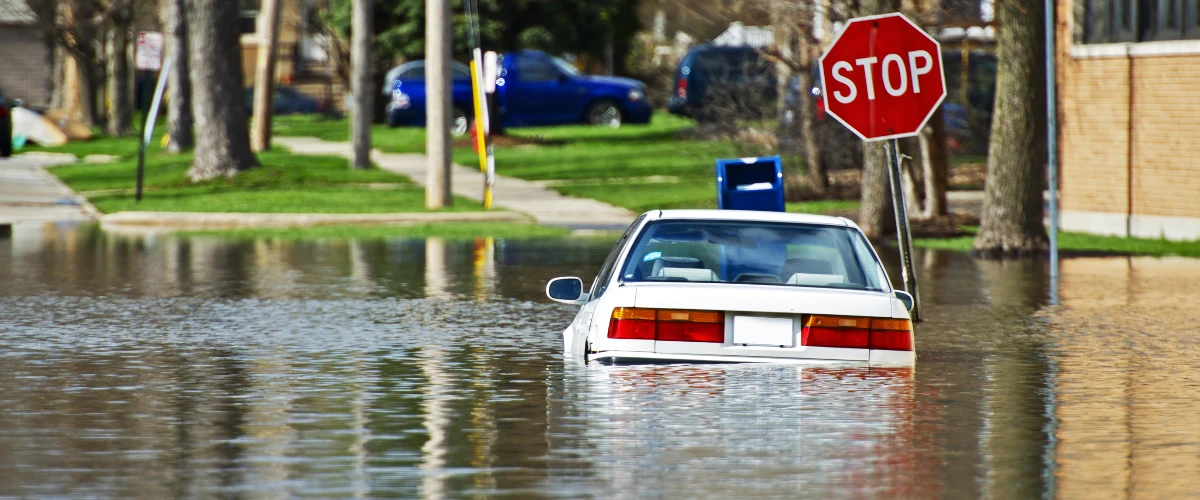Buying a car can be thrilling, but beware of the pitfalls, especially flood-damaged vehicles. They might be reported and settled by insurance, yet some slip through, resold without full disclosure. While reputable dealers often provide detailed histories like Carfax reports, vigilance is key.

Seek Trustworthy Sellers
Trust is crucial when purchasing a vehicle. Opt for well-established dealerships known for their integrity. They’re unlikely to jeopardize their reputation by selling flood-damaged cars. Such dealerships usually provide comprehensive vehicle history reports, ensuring transparency.
Inquire and Inspect
Don’t hesitate to ask pointed questions about the car’s history, particularly regarding flood damage. If the seller hesitates or the vehicle’s history isn’t clear, consider it a red flag. Inspecting the car’s interior is also vital. Look for dampness, odors, or rust, which are telltale signs of water damage.
When considering a vehicle purchase, your detective skills must come into play, especially to sniff out potential flood damage. Here’s how to conduct a meticulous inspection.
Do a Smell Test
Trust your nose—it’s a powerful tool in detecting flood damage. Seal the car by closing all windows and doors, wait a bit, then take a sniff upon opening the door. The presence of mold or mildew is a red flag, signaling possible water damage. If something smells too pleasant, be wary. Overuse of air fresheners might be masking a damp history.
Check for Moisture and Water Stains
Passed the smell test? Time to get hands-on. Feel around for damp spots, particularly under seats. Lifting carpets to inspect padding is crucial; moisture can linger there long after surfaces dry. Observe the vehicle’s instrument panel and glove box for trapped moisture. In the trunk, check beneath the spare tire for wetness or debris—these signs could indicate a past soaking.
Examine for Rust and Corrosion
Water leaves a lasting mark, not just with stains but with rust. Inspect hidden areas like under-seat springs and bolt ends. Any signs of corrosion could suggest brief submersion. Door jambs and other water-collecting spots deserve attention too. Paint bubbling in sheltered areas is a concern—it may not just be flood-related but could point to significant rust issues.
Assess Upholstery Consistency
Even if everything else checks out, mismatched upholstery can tell a story of hidden repairs. Variances in fabric shade or wear might indicate replacements made to disguise damage. Genuine sellers will openly discuss any changes. Look for consistency, and don’t hesitate to question anything that seems out of place.
Delve Deeper into Engine and Vehicle Components
When scrutinizing a potential vehicle purchase, a deeper look into specific components can reveal hidden flood damage signs. Here’s how to thoroughly examine the engine and other crucial parts.
Examine the Engine Oil
Checking the engine oil is a crucial step. Pull the dipstick and look at the oil’s color and consistency. Water-contaminated oil appears cloudy, resembling a frothy chocolate milkshake. This mixture is not only a sign of potential flood damage but also indicates severe engine issues. If the oil’s appearance raises suspicions, a further check after running the engine might reveal more. Any indication of water in the oil is a significant red flag.
Inspect the Air Filter
The engine air filter is another component that can betray flood history. Removing it is usually straightforward, but the telltale signs of water exposure are not. If the filter shows water staining or looks warped, it’s likely the vehicle encountered significant water. Like a moisture indicator in electronics, a compromised air filter is a clear warning.
Assess Headlights and Tail Lights
Don’t overlook the vehicle’s exterior lighting. Moisture inside headlights and tail lights can indicate submersion. Inspect for condensation or drilled holes intended for drainage. These signs, subtle yet revealing, can indicate past flood exposure.
Probe for Hidden Damage
Venturing further, check for silt, sand, or debris in areas like the engine bay or undercarriage. These materials can get lodged in hard-to-see places, hinting at the vehicle’s watery past. Pay attention to any irregularities or inconsistencies that could suggest flood-related repairs or damage.
Test Drive and Consult Experts
Always take the car for a test drive, focusing on its electrical system, which is vulnerable to water damage. If possible, consult with a trusted mechanic or expert to inspect the vehicle thoroughly, ensuring it hasn’t undergone undisclosed refurbishment.
By being diligent and informed, you can avoid the pitfalls of buying a flood-damaged vehicle, ensuring your purchase is safe and sound.